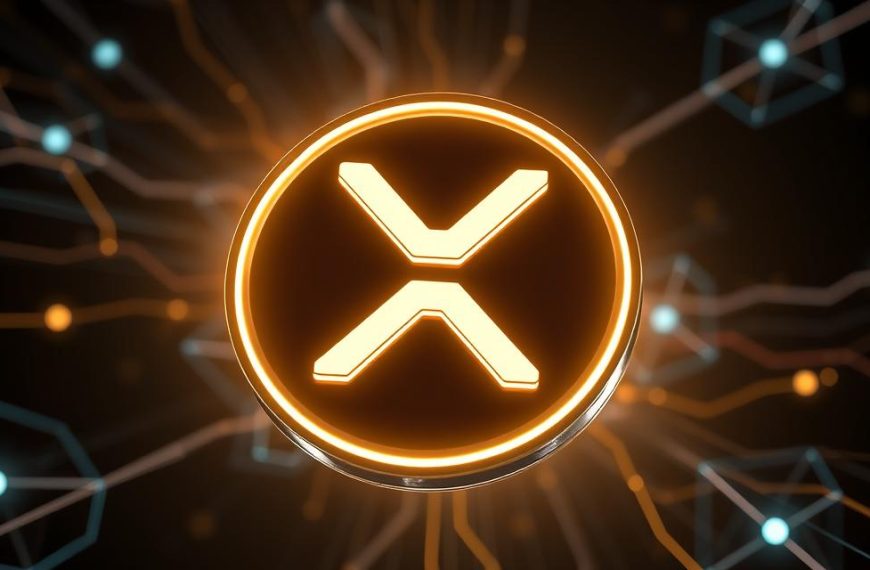Since Bitcoin’s debut in 2009, digital payment systems have revolutionized the financial landscape. These systems operate independently of traditional banks, offering a new way to manage and transfer value. At the heart of this innovation is blockchain technology, a decentralized ledger that ensures secure and transparent transactions.
Over the years, interest in digital assets has grown significantly. Despite market fluctuations, such as Bitcoin’s price dropping from $100k in 2024 to $82k in 2025, many see potential in this space. However, concerns about energy consumption remain. For example, a single Bitcoin transaction can use as much energy as 100,000 VISA transactions.
This guide will explore key concepts like decentralization, self-custody wallets, and the differences between centralized (CEX) and decentralized exchanges (DEX). Whether you’re new to this world or looking to deepen your understanding, this article will provide valuable insights.
What is Cryptocurrency?
Unlike traditional money, cryptocurrency operates without a central authority. It’s a form of digital currency that uses cryptography for security. The first ideas about such systems emerged in the 1990s, but it wasn’t until 2009 that Bitcoin, created by Satoshi Nakamoto, brought the concept to life.
Definition and Origin
Cryptocurrency is a decentralized digital asset built on blockchain technology. This technology ensures transparency and security by recording transactions in a public ledger. Bitcoin’s launch marked a turning point, proving that digital currencies could function without a central bank or government oversight.
How Cryptocurrency Differs from Traditional Currency
Traditional money, like the U.S. dollar, is issued and regulated by the government. Cryptocurrency, on the other hand, is not tied to any central authority. It’s stored in digital wallets instead of physical banks, offering users full control over their funds.
Another key difference is accessibility. Cryptocurrency transactions can occur 24/7, without the need for intermediaries like banks. However, unlike traditional accounts, crypto holdings are not insured by the FDIC, and they are not considered legal tender in most countries.
How Does Cryptocurrency Work?
Blockchain technology has reshaped how digital transactions are recorded and verified. At its core, a blockchain is a decentralized ledger that ensures transparency and immutability. Each transaction is grouped into a block, which is then added to a chain of previous blocks, creating a permanent record.
Blockchain Technology Explained
A blockchain consists of three main components: blocks, nodes, and consensus mechanisms. Blocks store transaction data, nodes are computers that validate and relay transactions, and consensus mechanisms ensure agreement across the network. For example, Bitcoin uses proof-of-work, where miners solve complex puzzles to validate transactions.
In contrast, platforms like Cardano and Solana use proof-of-stake, where validators are chosen based on the number of tokens they hold. This method is more energy-efficient and faster, with Ethereum processing 15-45 transactions per second compared to Bitcoin’s 7.
Decentralization and Security
One of the key features of blockchain is its decentralization. Unlike traditional systems, no single entity controls the network. This reduces the risk of fraud and hacking. Cryptographic hashing ensures that once a block is added, it cannot be altered, preventing 51% attacks.
Transaction verification also differs between systems. Mining, used by Bitcoin, involves solving computational problems, while staking, used by Cardano and Solana, relies on token ownership. Both methods ensure the integrity of the ledger, making it tamper-resistant.
“Blockchain’s decentralized nature offers a level of security that traditional banking systems struggle to match.”
For a deeper dive into how blockchain functions, check out this comprehensive guide.
Understanding Cryptocurrency Investment
The rise of digital assets has opened new doors for financial growth and innovation. For many, these assets represent a new frontier in wealth creation. However, navigating this space requires a clear understanding of the opportunities and challenges it presents.
What Does Investing in Cryptocurrency Mean?
Investing in digital assets involves purchasing tokens with the expectation of future growth. Unlike traditional investments, these assets are highly volatile. Bitcoin, for example, has appreciated by 12,000% since 2009, while Ethereum surged 92,000% since 2015.
There are several strategies to consider:
- Trading: Buying and selling assets to capitalize on price fluctuations.
- HODLing: Holding assets long-term, regardless of market changes.
- Staking: Earning rewards by locking up tokens to support network operations.
Each approach has its own risks and rewards, making it essential to choose a strategy that aligns with your goals.
Risks and Rewards of Crypto Investments
The crypto market is known for its extreme volatility. In 2022, Bitcoin lost 70% of its value, wiping $2 trillion from the market. However, by 2024, it had recovered significantly, showcasing its resilience.
Regulatory risks also play a role. Recent lawsuits by the SEC against platforms like Coinbase and Binance highlight the uncertainties in this space. Despite these challenges, many believe in the long-term potential of blockchain technology.
Diversification can help mitigate risks. Options like crypto index funds and ETFs allow investors to spread their exposure across multiple assets. This approach balances potential gains with reduced risk.
“The crypto market is a high-risk, high-reward space. Success requires careful planning and a clear understanding of the landscape.”
By staying informed and adopting a strategic approach, investors can navigate this dynamic market effectively.
Types of Cryptocurrencies
The digital currency landscape is diverse, with Bitcoin leading the way since its inception. Today, there are thousands of coins, each with unique features and purposes. Understanding the different types can help you navigate this evolving space.
Bitcoin: The Pioneer
Bitcoin, launched in 2009, remains the most recognized digital asset. It uses the SHA-256 algorithm for security and has a capped supply of 21 million coins. This scarcity has made it a popular store of value, often compared to digital gold.
Unlike traditional payments, Bitcoin transactions are verified by a decentralized network of miners. This process ensures transparency and security, making it a cornerstone of the crypto ecosystem.
Altcoins and Their Unique Features
Beyond Bitcoin, altcoins like Ethereum, XRP, and Solana offer additional functionalities. Ethereum, for example, introduced smart contracts, enabling decentralized applications. This innovation has expanded the use cases of digital assets beyond simple transactions.
Utility tokens like XRP and Solana focus on specific applications, such as cross-border payments or high-speed transactions. In contrast, stablecoins like Tether and USD Coin are pegged to fiat currencies, providing stability in a volatile market.
Niche players like Monero emphasize privacy, while memecoins like Dogecoin have gained popularity through community support. Each type of coin serves a unique purpose, reflecting the versatility of blockchain technology.
For a deeper dive into the different types of digital assets, check out this comprehensive guide.
How Cryptocurrency Investment Works
Digital assets have transformed the way people think about financial transactions. To get started, you need to understand the basics of buying, selling, and storing these assets. This section will guide you through the process, from choosing the right exchange to securing your wallet.
Buying and Selling Cryptocurrency
To buy sell digital assets, you’ll need to create an account on a trusted platform. Popular exchanges like Coinbase and Kraken offer user-friendly interfaces and high security. Coinbase, for example, has a 4.6/5 rating on NerdWallet, while Kraken scores 4.3/5.
The process typically involves:
- Completing KYC verification to confirm your identity.
- Funding your account using a bank transfer or card.
- Placing an order and executing the transaction.
Centralized exchanges (CEX) like Binance offer high liquidity, while decentralized platforms (DEX) like Uniswap provide greater control over your assets. Each option has its pros and cons, so choose based on your needs.
Storing Your Crypto: Wallets Explained
Once you’ve acquired digital assets, storing them securely is crucial. A digital wallet is essential for managing your holdings. There are two main types: hot wallets and cold wallets.
Hot wallets, like MetaMask, are connected to the internet and convenient for frequent transactions. Cold wallets, such as Ledger Nano ($79) and Trezor ($69), are offline and offer enhanced security. Cold wallets are ideal for long-term storage.
However, wallet security comes with risks. In 2024, over $1 billion was stolen through phishing attacks. To protect your assets:
- Never share your seed phrase with anyone.
- Use hardware wallets for large holdings.
- Enable two-factor authentication (2FA) on your account.
Proper seed phrase management is critical. Write it down and store it in a secure location, away from digital devices.
| Wallet Type | Cost | Security Level |
|---|---|---|
| Ledger Nano | $79 | High |
| Trezor | $69 | High |
| MetaMask | Free | Medium |
“Securing your digital assets requires a combination of the right tools and best practices.”
By following these steps, you can confidently navigate the world of digital assets and protect your investments.
Short-Term vs. Long-Term Crypto Investments
Investing in digital assets offers two primary approaches: short-term trading and long-term holding. Each strategy has its own risks and rewards, making it essential to understand which aligns with your goals. Whether you’re looking for quick gains or steady growth, this section will guide you through the key differences.
Day Trading and Speculation
Short-term trading involves buying and selling assets within a short time frame, often based on market trends. Day traders average 10-20 trades daily, but studies show that 95% fail within their first year. This approach requires constant monitoring and a deep understanding of technical analysis tools like RSI, MACD, and Bollinger Bands.
Speculation can lead to significant gains but also substantial losses. Emotional challenges, such as FOMO during price pumps or panic selling during dips, often impact decision-making. Additionally, tax implications for short-term trades can be complex, as wash sale rules don’t apply to digital assets.
HODLing: A Long-Term Strategy
HODLing, a term derived from “hold,” refers to buying and holding assets for extended periods. Bitcoin HODLers, for example, saw 200x returns from 2015 to 2025. This strategy focuses on long-term growth rather than short-term fluctuations.
Historical analysis shows that Bitcoin follows a 4-year market cycle, making HODLing a viable option for patient investors. Dollar-cost averaging, where you invest fixed amounts over time, can help mitigate risks associated with market volatility.
| Strategy | Pros | Cons |
|---|---|---|
| Day Trading | Potential for quick profits | High risk, requires constant attention |
| HODLing | Long-term growth, less stress | Requires patience, market volatility |
“The key to success in digital assets lies in choosing a strategy that aligns with your risk tolerance and financial goals.”
Cryptocurrency Mining: What You Need to Know
Cryptocurrency mining plays a vital role in maintaining blockchain networks. It involves validating transactions and adding them to the blockchain, ensuring security and transparency. This process requires specialized hardware and consumes significant energy, making it both resource-intensive and essential for the ecosystem.
How Mining Works
Mining relies on solving complex mathematical problems to validate transactions. Miners use either ASIC (Application-Specific Integrated Circuit) or GPU (Graphics Processing Unit) hardware. ASICs are designed specifically for mining and offer higher efficiency, while GPUs are more versatile but less powerful.
Mining pools, like Foundry USA, which controls 33% of the hashrate, allow miners to combine resources and share rewards. This approach increases the chances of earning consistent payouts, especially for smaller miners.
Is Mining Profitable?
Profitability depends on factors like electricity costs, hardware efficiency, and coin prices. For example, the Antminer S19 Pro has an ROI of 18 months at $0.05/kWh. However, Bitcoin mining consumes 127TWh/year, equivalent to Norway’s total energy consumption, raising concerns about sustainability.
By 2025, 38% of mining operations are expected to use sustainable energy sources. Alternative consensus mechanisms like Proof-of-Stake (PoS) and Proof-of-History (PoH) are gaining traction as they require less energy and hardware.
“Mining is a cornerstone of blockchain technology, but its environmental impact and profitability challenges are driving innovation in the space.”
- ASIC vs GPU: ASICs are more efficient but less flexible than GPUs.
- Break-even Points: Calculate electricity costs against coin prices to determine profitability.
- Environmental Impact: Transitioning to sustainable energy is crucial for the future of mining.
Regulation and Legal Considerations
The regulatory landscape for digital assets is rapidly evolving, shaping how governments and investors interact with this new financial frontier. From the U.S. to the EU and China, policies vary widely, creating a complex environment for users and platforms alike.
In the U.S., the SEC has classified 68 digital assets as securities in 2025, signaling stricter oversight. Meanwhile, the EU’s Markets in Crypto-Assets (MiCA) framework aims to harmonize regulations across member states. In contrast, China has banned all private digital currency transactions, highlighting the global divide in approach.
Government Policies on Cryptocurrency
Governments are stepping up efforts to create clear policies for digital assets. The U.S. has introduced the Lummis-Gillibrand bill, which seeks to establish a comprehensive regulatory framework. This legislation aims to balance innovation with consumer protection, addressing issues like fraud and market manipulation.
Key global policies include:
- U.S.: SEC oversight and proposed legislation like Lummis-Gillibrand.
- EU: MiCA framework for unified regulation.
- China: Complete ban on private digital currency transactions.
Tax Implications for Crypto Investors
Taxation is a critical consideration for investors. The IRS requires all digital asset transactions to be reported on Form 8949. Failure to comply can result in penalties, making accurate record-keeping essential.
Capital gains tax rates vary based on holding periods:
- Short-term: 37% for assets held less than a year.
- Long-term: 20% for assets held over a year.
Compliance tools like CoinTracker and TokenTax simplify the process, helping investors stay on top of their obligations. Additionally, the FATF Travel Rule mandates that exchanges collect beneficiary data for transactions over $1,000, further enhancing transparency.
“Navigating the legal and tax landscape of digital assets requires careful planning and the right tools to ensure compliance.”
By staying informed about government policies and tax requirements, investors can minimize risks and maximize opportunities in this dynamic space.
How to Start Investing in Cryptocurrency
Entering the world of digital assets begins with understanding the basics of exchanges and accounts. Whether you’re a beginner or looking to refine your strategy, the right platform and approach can make all the difference.
Choosing the Right Exchange
Selecting a reliable exchange is the first step. Platforms like Coinbase and Binance dominate the market, with 56M and 128M verified users, respectively. These platforms offer user-friendly interfaces and robust security features.
When evaluating an exchange, consider factors like fees, liquidity, and insurance. For example, Robinhood allows minimum investments of $10, while eToro starts at $25. Always prioritize platforms with strong reputations and regulatory compliance.
Setting Up Your First Investment
Once you’ve chosen an exchange, the next step is setting up your account. This involves completing KYC verification and funding your account via bank transfer or card. Ensure you enable two-factor authentication (2FA) for added security.
Portfolio allocation is crucial. Experts recommend dedicating 1-5% of your net worth to digital assets. Dollar-cost averaging (DCA) is a popular strategy. For instance, investing $100 weekly in Bitcoin can help mitigate market volatility.
Finally, implement a security checklist. Whitelist withdrawal addresses and set limits to protect your funds. Proper setup and vigilance are key to safeguarding your investments.
“A well-planned start ensures long-term success in the dynamic world of digital assets.”
Conclusion
Navigating the world of digital assets requires a balance of knowledge, caution, and strategy. Start by securing your wallet and diversifying your portfolio to minimize risk. Research is essential to understand the market and emerging trends like CBDCs and institutional adoption.
Be cautious of common pitfalls such as rug pulls and excessive leverage trading. These can lead to significant losses. To build your expertise, consider educational resources like Coursera’s DeFi courses, which provide in-depth insights into blockchain and decentralized finance.
For beginners, it’s wise to start small and focus on established assets like Bitcoin and Ethereum. These offer a solid foundation in the ever-evolving technology of digital finance. With careful planning and continuous learning, you can navigate this dynamic space effectively.



















